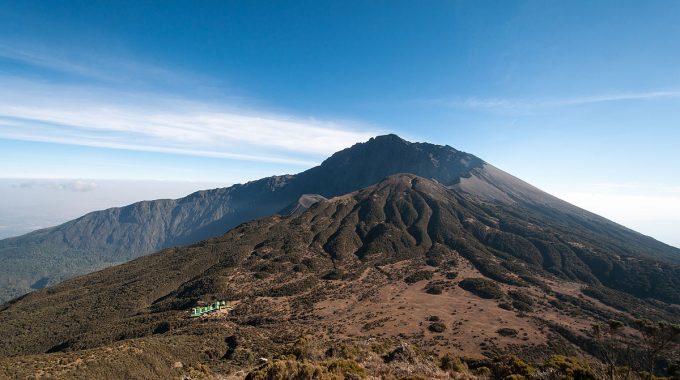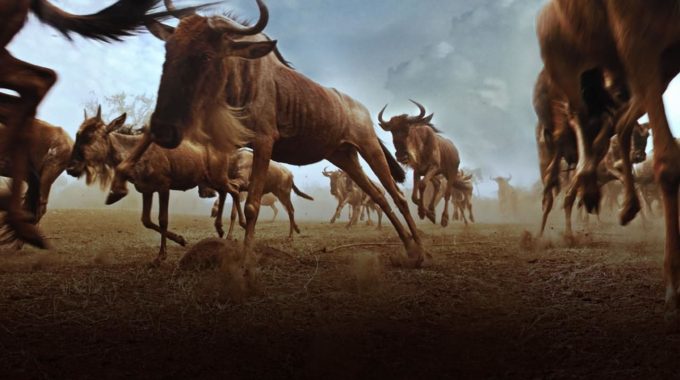What months do migration occur in Serengeti?
What months do migration occur in Serengeti? – The wildebeest migration in the Serengeti follows a predictable seasonal pattern based on rainfall, food availability, and the need for fresh grazing and water. The migration typically occurs in a cyclical, year-round pattern, but certain months stand out for key stages of the migration. Here’s a breakdown of the migration’s timing in the Serengeti:

1. Southern Serengeti – Calving Season (January to March)
- Key Activity: Calving.
- What Happens: The wildebeest gather in the southern Serengeti (primarily around the Ndutu area and Ngorongoro Conservation Area) to give birth. This is the peak of the calving season, with over 500,000 calves being born over a few weeks.
- Why It’s Special: The synchronized calving ensures that the wildebeest give birth at the same time, overwhelming predators like lions, cheetahs, and hyenas. The fresh grass from the short rains provides rich nourishment for the mothers and newborns.
- Best Time to Visit: January to March for witnessing newborn wildebeest and predator action.
2. Central Serengeti – Migration Moves North (April to June)
- Key Activity: Migration North.
- What Happens: After the calving season, the wildebeests start to move northward through the central Serengeti, following the rains and the growing grass. This is the beginning of their journey towards the western Serengeti and beyond into the northern Serengeti.
- Why It’s Special: The herds are still in the Serengeti at this point, and you can see large numbers of wildebeest grazing on the vast plains.
- Best Time to Visit: April to June to catch the wildebeests as they move through the central Serengeti, though river crossings and intense predator action are yet to come.
3. Northern Serengeti & Mara River Crossings (July to September)
- Key Activity: River Crossings and migration into Kenya.
- What Happens: By July, the herds reach the northern Serengeti, and by August to September, they attempt the dramatic Mara River crossings into Kenya’s Masai Mara. This is one of the most iconic and thrilling parts of the migration, as the wildebeest face numerous dangers, including crocodiles in the river and lions on the riverbanks.
- Why It’s Special: The Mara River crossings are among the most photographed moments of the migration. The spectacle of wildebeest leaping into the river, trying to avoid crocodiles, and the action with predators is a highlight of any safari.
- Best Time to Visit: July to September for the Mara River crossings and to witness the wildebeest in the northern Serengeti.
4. Western Serengeti – Grumeti River (May to June)
- Key Activity: Grumeti River Crossings.
- What Happens: Before reaching the Mara River, the wildebeest cross the Grumeti River in the western Serengeti. This occurs mainly in May and June, as the herds are moving north. The Grumeti River is also home to large crocodiles and predators that target the crossing wildebeest.
- Why It’s Special: The river crossing at Grumeti, while not as famous as the Mara River, is still dramatic, with fewer tourists in this part of the Serengeti compared to the Mara region.
- Best Time to Visit: May to June for a quieter, more exclusive experience of the river crossings in the western Serengeti.
5. Serengeti Plains – Return South (October to December)
- Key Activity: Migration Southward.
- What Happens: After spending months in the northern Serengeti and Masai Mara (Kenya), the wildebeest start to move back south into Tanzania for the next cycle of the migration. The herds typically start returning south by October, moving back to the Serengeti’s southern plains, where they can find fresh grazing.
- Why It’s Special: During October to December, the herds are often spread out across the Serengeti plains, preparing for another round of calving.
- Best Time to Visit: October to December for quieter safari experiences as the herds head south, and for early calving season sightings.
Summary of Key Months for the Serengeti Migration:
- January to March: Calving season in the southern Serengeti (Ndutu area).
- April to June: Wildebeest begin moving north through central Serengeti, heading towards the western Serengeti.
- May to June: Wildebeest cross the Grumeti River in the western Serengeti.
- July to September: The herds are in the northern Serengeti, and Mara River crossings (into Masai Mara) occur.
- October to December: The wildebeest start migrating southward back to the Serengeti for the calving season.
Best Times for Different Experiences:
- For Calving: January to March in southern Serengeti.
- For River Crossings: July to September (Mara River and Grumeti River).
- For Migration Movement: April to June (moving through central and western Serengeti) and October to December (returning south).
Each part of the Serengeti migration offers unique wildlife experiences depending on the time of year you visit. Book your Kenya and Tanzania wildebeest migration safari with Adventure in the Wild Safaris.



